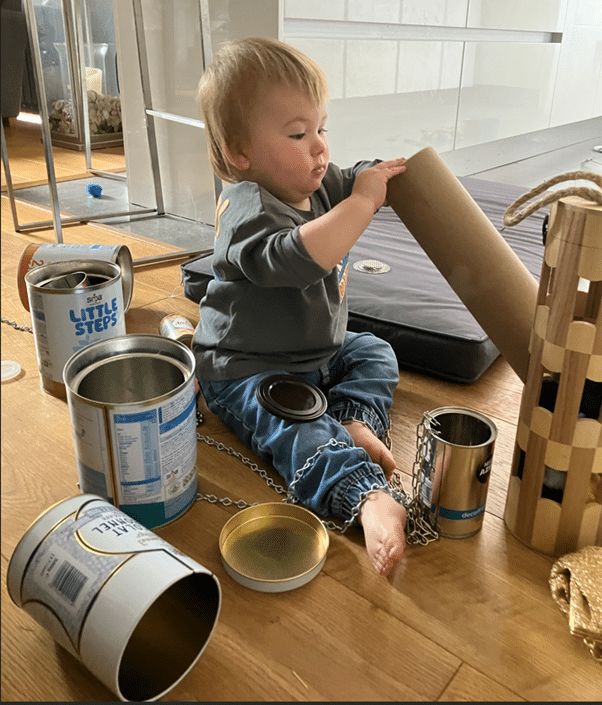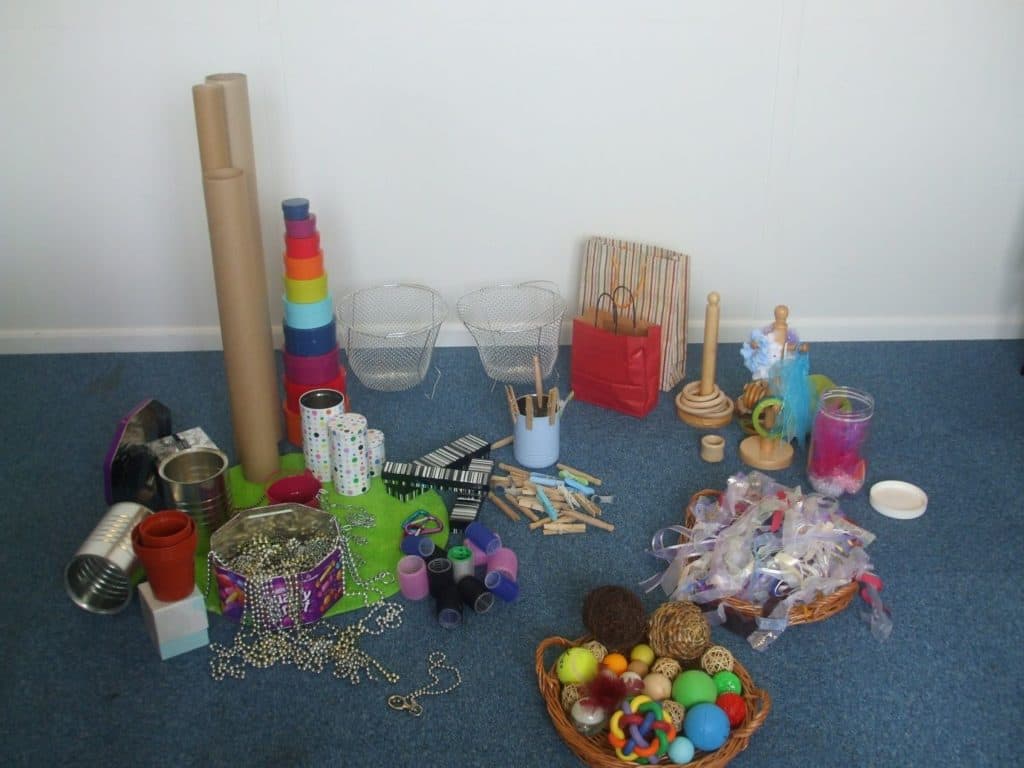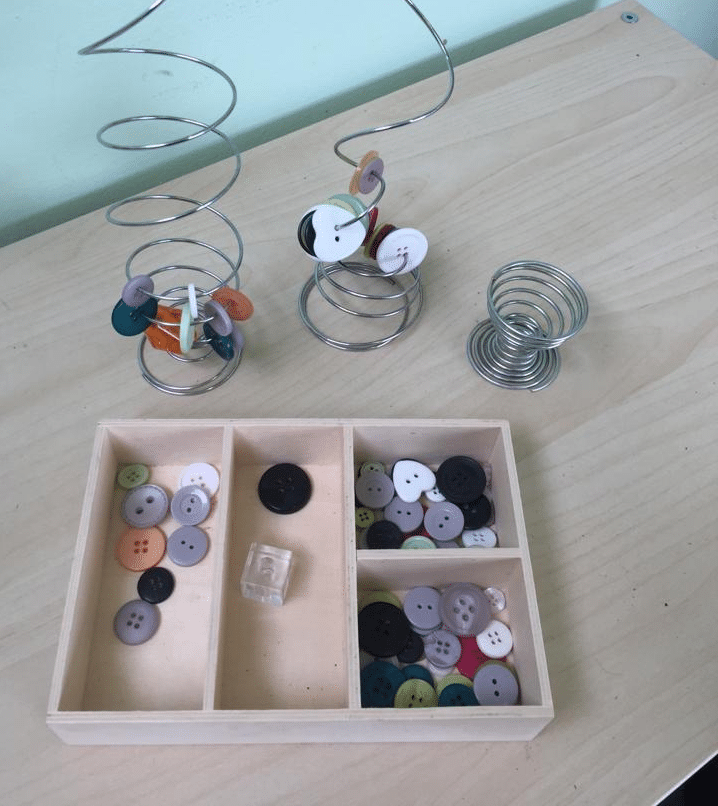What is heuristic play?
Heuristic play is a way your child can explore the world that surrounds them, to find meaning in it, and to feel some control over it. It allows your child to experiment with objects and the environment.
Heuristic play is typically suited to more mobile babies/toddlers approaching their second year (18-24 months).

Why is heuristic play important?
When your baby becomes mobile and grows into a toddler they become interested in what their body can do, and also what their body can do with objects.
Heuristic play will allow your child to develop key skills for future learning and development. It is the…
- Basis of all future problem solving, scientific and mathematical learning for your child
- Chance for your child to develop an interest in cause-and-effect, for example the relationship between objects and the effect of their action upon objects
- Opportunity for your child’s physical skills to be practiced and developed
- Promotion of your child’s independence and thinking skills
- Chance for your child to develop concentration skills

What items can be used for heuristic play?
This can be a collection of bits and pieces that might be found around the house or in the recycling!
The important thing to remember is that they are items which are open ended and not ‘toys’, such as…
- Woollen pom poms
- Cardboard cylinders of all sizes and lengths
- Ribbons
- Boxes of all sizes
- Off cuts of sanded wood
- Large buttons
- Metal jar lids/tins
- Balls of different textures and sizes
- Bangles
- Ping-pong balls
- Tissue paper
- Yoghurt pots
- Baskets
- Cotton reels
- Mug trees/kitchen roll holders
- Shells
- Bottle corks
- Lengths of chain/bunches of keys
- Hair rollers
- Curtain rings
- Pegs
- Plastic bottles/tubs

Top tips:
- Always undertake a risk assessment: supervise your child and check for choking hazards
- Find a quiet time: allow your child to explore with no distractions
- Provide lots of materials: this will ensure plenty of choice for your child
- Sit close by your child: this will provide reassurance and safety, and share your child’s exploration
- Help your child investigate: move objects around, but be careful not to take over and direct their play
- Your attention and interest in what your child is doing is key: if your child starts throwing objects around, you can intervene with suggestions and distractions
- Change the objects regularly: this will add variety and maintain your child’s interest
